




An Overview of the Solar System
The solar system is made up of the Sun and everything that revolves or moves around it. This comprises the eight planets and their moons, as well as dwarf planets, asteroids, comets, and other tiny, icy objects. Despite this, the majority of the solar system is in space.
The solar system is merely a small fraction of the Milky Way galaxy, which is a vast structure of stars and other objects. Every 225 million years, the solar system circles the centre of the galaxy. The Milky Way galaxy is simply one of the billions of galaxies that comprise the universe as a whole.
Solar System List
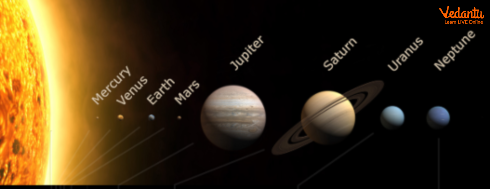
Solar System
The solar system also includes eight planets, which are enormous, almost spherical objects that round the Sun in elliptical trajectories known as orbits. The Earth is also a planet, and it is far enough away from the Sun that it is neither too hot nor too cold for life to survive. Planets originated at least 4.6 billion years ago when dust and gas discs circling the Sun collided and clumped together owing to gravity. Planets are classified into two types:
Rocky Planets: Mercury, Venus, Earth, and Mars are largely formed of solid rock and metal.
Gas Giants: Jupiter, Saturn, Uranus, and Neptune are composed primarily of gases such as hydrogen, helium, and methane. These planets are much larger than the rocky worlds.
The solar system also contains asteroids, which are tiny irregularly shaped objects composed of rock, metal, and carbon that circle the Sun. The asteroid belt contains the majority of these objects, which orbit between Mars and Jupiter.
Solar System All Planets Name
Planets circle the Sun in elliptical orbits, with the Sun slightly off-centre of each ellipse. Mercury, Venus, Earth, Mars, Jupiter, Saturn, Uranus, and Neptune are the eight planets.
SUN: The biggest star in our solar system, accounting for 99.8% of its mass. It emits the majority of the heat and light that allow life to exist on Earth and potentially beyond.
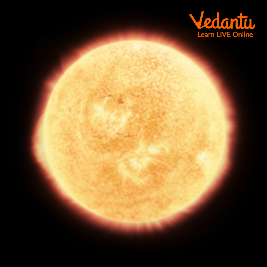
Sun
MERCURY: Mercury is the smallest planet in the solar system, measuring only slightly bigger than Earth's Moon and travelling around the Sun in only 88 days. The atmosphere of Mercury is extremely thin and mostly consists of oxygen, sodium, hydrogen, helium, and potassium. Because its atmosphere is so thin that it cannot absorb incoming meteors, its surface is dotted with craters, much like our moon's.
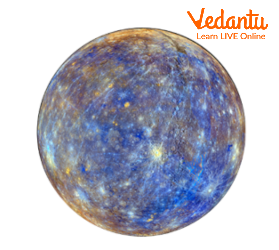
Mercury
VENUS: Venus is the nearest planet to Earth and the second closest to the Sun in terms of distance from the Sun. Venus is sometimes known as Earth's twin since it is so similar to Earth in terms of size and density. Venus's atmosphere is thick and poisonous, filled with carbon dioxide. The planet is usually covered in dense clouds of yellowish sulfuric acid. Venus has the highest surface temperature of any planet in the solar system, at roughly 475 degrees Celsius.
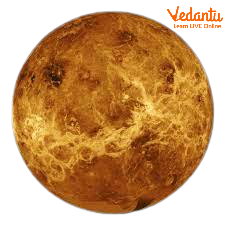
Venus
EARTH: Our home planet, Earth, is the third planet from the Sun. It is a water world, with water covering two-thirds of the globe. The atmosphere of Earth is rich in nitrogen and oxygen, and it is the only known globe to support life. It is also called the blue planet and venus’s twin.

Earth
MARS: It is the solar system's fourth planet. It is a frigid, desert-like planet coated in iron oxide dust, which gives it its distinctive red tint. Mars' terrain is rocky, with mountains, valleys, and canyons, as well as storm systems ranging from small tornado-like dust devils to planet-engulfing dust storms.
Significant scientific evidence shows that Mars was once a much warmer, wetter environment, with rivers and maybe even seas. Although Mars' atmosphere is too thin for liquid water to persist on the surface for an extended period, traces of a wetter Mars can still be seen today.
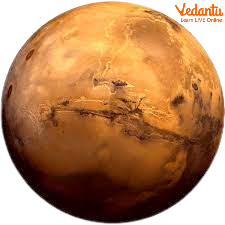
Mars
JUPITER: The biggest planet in the solar system and the fifth planet from the Sun. Its whirling clouds are coloured by various trace gases such as ammonia ice, ammonium hydrosulfide crystals, and water ice and vapour. Jupiter has a powerful magnetic field and 75 moons, including Ganymede, the biggest moon in the solar system.
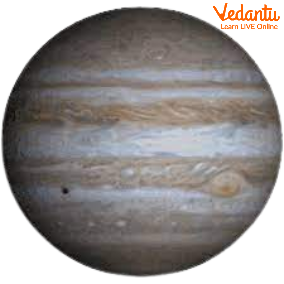
Jupiter
SATURN: The sixth planet from the Sun is known for its extensive and unusual ring system. Even though Saturn is not the only planet in the solar system to have rings, Scientists are unsure how the rings developed since they are composed of ice and rock. The gaseous planet, which is mainly hydrogen and helium, contains several moons.
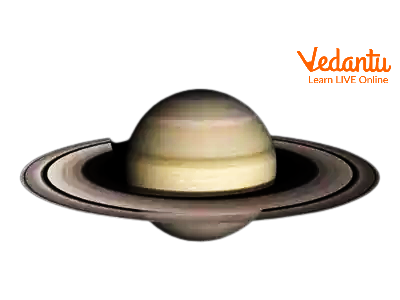
Saturn
URANUS: The seventh planet from the Sun and is an outlier. It possesses hydrogen sulphide clouds, the same component that makes rotting eggs smell so bad. It rotates from east to west, similar to Venus. However, unlike Venus or any other planet, its equator is roughly perpendicular to its orbit – it effectively circles on its side.
The impact may have also sent rock and ice into Uranus' orbit. These were eventually transformed into some of the planet's 27 moons. Uranus' blue-green hue is due to methane in its atmosphere. It also contains 13 faint ring sets.

Uranus
NEPTUNE: The eighth planet from the Sun and the coldest planet in the solar system on average. Neptune's average temperature at the top of the clouds is -346 degrees Fahrenheit (-210 degrees Celsius).
Neptune is similar in size to Uranus and is noted for its supersonic strong winds. The planet is more than 30 times farther away from the Sun than Earth is. Neptune is around 17 times the size of Earth and contains a rocky core.
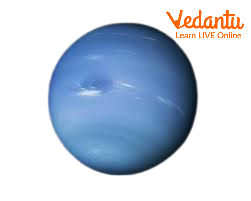
Neptune
How Many Solar Systems are There in the Universe?
One unique planetary system—a star with planets surrounding it—is our solar system. Although there are more than 3,200 other stars in our galaxy with planets around them, our solar system is the only one that is formally referred to as a "solar system." Just how many have we so far located. There are probably a lot more undiscovered planetary systems out there!
There are over 200 billion stars in our galaxy, including our Sun. This provides researchers with a large number of locations to look for exoplanets, or planets outside of our solar system. But it's only recently that technology has advanced to the point that astronomers can actually locate such worlds.
Minor Members of the Solar System
Comets, asteroids, objects in the Kuiper Belt and the Oort cloud, minor planetary satellites, Triton, Pluto, Charon, and interplanetary dust are some of the small bodies in the solar system. These objects may reflect on Earth as well as the genesis and evolution of the solar system because some of them are thought to have undergone only minor changes from their status in the early solar nebula from which the planets formed.
Other Members of the Solar System
Our solar system consists of a star, the Sun, eight planets, 146 moons, a slew of comets, asteroids, space rocks, ice, and numerous dwarf planets, including Pluto. Mercury, Venus, Earth, Mars, Jupiter, Saturn, Uranus, and Neptune are the eight planets.
Satellites
These are objects that orbit planets and are therefore part of the solar system. The Moon is the Earth's natural satellite. Some satellites, like Ganymede (which orbits Jupiter), are larger than Mercury and have atmospheres.
Asteroids
These are large pieces of rock or metal that circle the Sun between Mars and Jupiter. These moons are thought to have been part of the asteroid belt rather than orbiting Mars. The asteroid belt lies between Mars and Jupiter. It includes rock chunks far smaller than planets. These masses are known as asteroids or minor planets. They are not visible to the human eye from Earth, although many may be viewed using binoculars or small telescopes.
Comets
These are tiny, irregularly shaped ice objects. They often come from the Kuiper Belt, which is located beyond Neptune in the solar system's furthest regions. When these objects approach the Sun, the ice evaporates, leaving behind a lovely tail. Some of these comets arrive regularly, such as Halley's Comet, which comes every 76 years (the next time in 2061!).
Dwarf Planets
Dwarf planets are objects orbiting the Sun that are smaller than planets but larger than asteroids. Ceres, the nearest dwarf planet to us, is located in the asteroid belt. The most well-known is Pluto, which is located beyond Neptune on the inner rim of the Kuiper belt. For the first time in history, a spacecraft dubbed New Horizons visited Pluto and its five satellites in 2014, obtaining high-resolution photographs of the frozen dwarf planet.
Practice Questions
1. Which planet is the smallest in the Solar System?
Mercury
Jupiter
Venus
Saturn
Ans: Mercury
2. Venus is regarded as Earth's twin for the following reasons:
It is the most visible planet in the night sky.
It has the highest temperature in the Solar System.
It has the same size and form as the Earth.
There are no moons.
Ans: It has the same size and form as the Earth.
3. Which planet is referred to as the "Morning Star" or the "Evening Star"?
Neptune
Mars
Saturn
Venus
Ans: Venus
Summary
This article details what the solar system is, the structure of the solar system, and relevant information regarding orbits, planets, moons, asteroids, and comets. The solar system consists of the Sun, its eight main planets, dwarf planets, tiny bodies, and interplanetary dust and gas under the gravitational dominion of the Sun.
FAQs on Solar System
1. What is the Solar System and what are its main components?
The Solar System is the gravitationally bound system comprising the Sun and all the objects that orbit it. The Sun, a star, is at the centre and contains 99.8% of the system's mass. Its main components include:
- Eight Planets: Mercury, Venus, Earth, Mars, Jupiter, Saturn, Uranus, and Neptune.
- Dwarf Planets: Smaller spherical bodies like Pluto and Ceres.
- Moons (Natural Satellites): Objects that orbit planets, such as Earth's Moon.
- Asteroids: Small, rocky objects primarily found in the asteroid belt between Mars and Jupiter.
- Comets: Icy bodies that develop a tail as they approach the Sun.
2. What is the correct order of the eight planets starting from the Sun?
The correct order of the eight planets in our Solar System, starting from the one closest to the Sun and moving outwards, is: Mercury, Venus, Earth, Mars, Jupiter, Saturn, Uranus, and Neptune. A common mnemonic to remember this order is: "My Very Eager Mother Just Served Us Noodles."
3. What is the main difference between the inner rocky planets and the outer gas giants?
The planets in our Solar System are broadly divided into two types based on their composition:
- Rocky Planets (Inner Planets): These are Mercury, Venus, Earth, and Mars. They are smaller, denser, and are primarily composed of solid rock and metal. They have solid surfaces.
- Gas Giants (Outer Planets): These are Jupiter, Saturn, Uranus, and Neptune. They are much larger and are composed mainly of gases like hydrogen, helium, and methane, with a small, rocky core.
4. Why is Venus hotter than Mercury, even though Mercury is closer to the Sun?
Although Mercury is the closest planet to the Sun, Venus is the hottest planet in the Solar System. This is because Venus has an extremely thick and toxic atmosphere composed mainly of carbon dioxide. This dense atmosphere creates a powerful greenhouse effect, trapping heat from the Sun and raising the surface temperature to around 475°C, which is hot enough to melt lead.
5. How do planets stay in their orbits around the Sun?
Planets stay in their orbits due to a balance between two forces: the Sun's immense gravitational pull and the planet's own inertia (its tendency to continue moving in a straight line). The Sun's gravity constantly pulls the planets towards it, while their forward motion prevents them from falling in. This balance forces them into a stable, curved path known as an orbit.
6. Why is Pluto no longer classified as a full planet?
In 2006, the International Astronomical Union (IAU) reclassified Pluto as a dwarf planet. While Pluto is spherical and orbits the Sun, it does not meet the third criterion for being a planet: it has not "cleared its orbital neighbourhood." This means its orbit is shared with other celestial bodies in the Kuiper Belt, a region of icy debris beyond Neptune.
7. What are asteroids and where are they typically found?
Asteroids are small, irregularly shaped objects made of rock, metal, and carbon that orbit the Sun. They are much smaller than planets. The vast majority of asteroids are found in the main asteroid belt, a region of space located between the orbits of Mars and Jupiter. These are considered remnants from the early formation of the Solar System.
8. What makes Earth a unique planet capable of supporting life?
Earth's ability to support life is unique in our Solar System due to a combination of factors. It is located at a perfect distance from the Sun, in the "habitable zone," allowing for moderate temperatures. Crucially, Earth has an atmosphere rich in nitrogen and oxygen and is the only known planet with vast amounts of liquid water on its surface, both of which are essential for life as we know it.






















